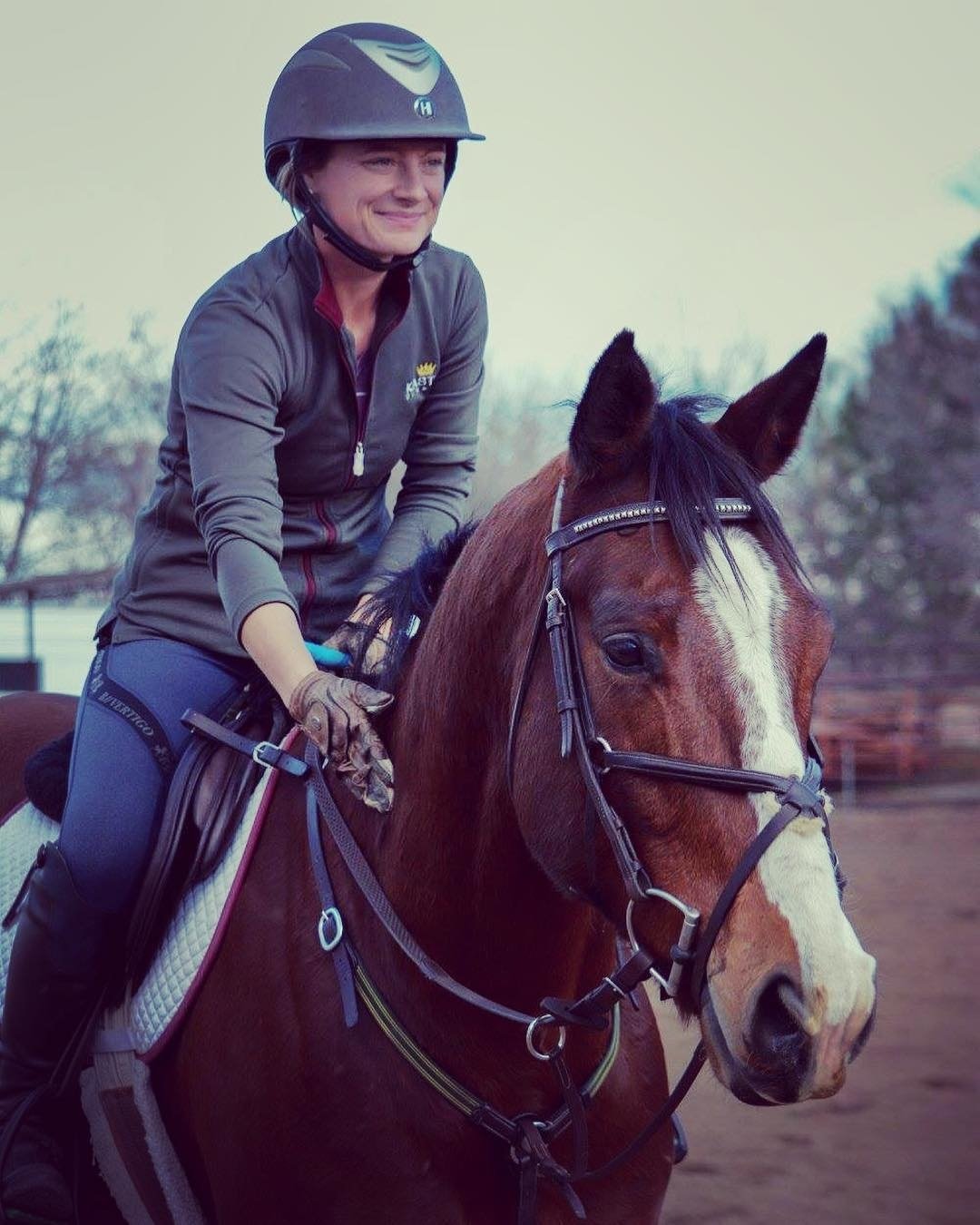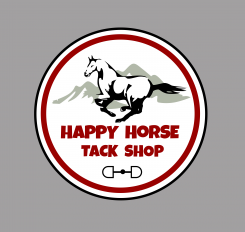Bridle Basics
- Posted on
- By Happy Horse Tack Shop
- 0

Purpose of the bridle:
The most basic purpose of a bridle is to keep the bit securely in the horse's mouth. The bridle and bit combination helps riders communicate with and control the horse. Bridles can be super simple or more complex, based on the discipline of the rider and the purpose of their riding. The first bridles were just the bit and the rein, but they have evolved over time to use less force and softer hands, while ensuring the bit stays in place.
Pieces of the bridle:
Crown - The crown piece is the part of the bridle that goes across the horse's poll, behind the ears. It is one of the most important pieces of the bridle since it holds everything else together and keeps the bridle in the proper place. The throat latch, cheek pieces, and in some cases, the noseband all attach to the crown piece.
Browband - The browband runs across the horse’s forehead and attaches to either side of the crown to add extra stability to the bridle and keep the crown piece from slipping back on the horse's neck.
Throatlatch - The throatlatch’s purpose is to prevent the bridle from slipping off the horse's head. As its name infers it runs under the horse's throat.
Cheek Pieces - The cheek pieces' purpose is to hold the bit in place. They generally attach straight from the crown to the bit. There may be multiple cheek pieces on a double bridle for the use of two bits and reins.
Noseband - The noseband runs across the horse's nose and can add extra pressure to the horse’s face. It is usually meant for keeping the horse's mouth closed and adds a point of attachment for additional tack, such as a martingale. We will explore some of the different types of nosebands below.
Types of bridles:
Snaffle bridle - A snaffle bridle is the most commonly used type of bridle. It is very basic and is used with one bit and one rein. The noseband can come in different configurations and affect how pressure is put on the head and how information is communicated.
- -A cavesson noseband has its own headpiece and is attached to the rest of the bridle by running through the browband along with the crown piece.
- -A figure 8 nose piece crosses from the top of the cheek on one side to the chin on the other side, making a figure 8 shape. This type of nose piece keeps the horse's mouth closed and allows for better airflow through the nose because of the higher central pressure point on the nose.
- -A flash piece is an additional piece that attaches to the noseband and holds the bit more securely in place and helps keep the horse's mouth closed.
Anatomical Bridle - Anatomical bridles are designed with your horse's anatomy in mind. They avoid sensitive facial nerves and pressure points, which allows for more natural facial movement and promotes the horse’s well being and comfort.
- -The Rambo Micklem bridle was the first anatomical bridle to become popular. It is designed to fit the horse's skull, avoiding pressure on the main facial nerves, protecting the cheek bone and resting higher on the nose to avoid pressure on fragile nose bones.
Bitless Bridles - Bitless bridles control the horses movement by putting pressure on the head instead of in the mouth. They generally put pressure across the head, including the nose, jaw, cheek, chin groove and poll, instead of just in the mouth.
Dressage Bridle - Dressage bridles are usually black to match black dressage tack, but brown is becoming more common. Dressage bridles also usually have padded or thicker nosebands and sometimes have fancy browbands as well. There are different nosebands frequently used on dressage bridles that have different effects.
- -A drop noseband sits lower on the horse's nose than a typical bridle and keeps the horse's mouth closed.
- -A crank noseband has a leveraged closure mechanism under the horse’s chin for a tighter and more precise fit. It is meant to keep the horse’s mouth closed and prevent evasive maneuvers. Because of the tight fit it has additional padding in the jaw area.
Double Bridle - A double bridle is very similar to any other bridle but it has two sets of cheek pieces, so that it can be used with two bits and two sets of reins. This type of bridle is only used in dressage.
Hunter Bridle - Hunter bridles are usually brown with fancy stitching. They are very similar to any other english bridle, the stitching is usually what sets them apart. They can or cannot have a flash attachment.
Bridle Fit:
Proper bridle fit is very important to make sure the bridle works properly and does not cause the horse any pain. Improper fit may also result in lack of control or unclear communication. Each horse requires a different fit and the fit will depend on the type of bridle and pieces you are using. Each piece of the bridle should be individually adjusted as well.
Bridles generally come in pony, cob, horse and warmblood sizing, but some bridles may allow you to switch out different pieces in case your horse does not fall into one of the typical fits.
If you are new to horses or sizing tack, we recommend you work with a trainer or professional to make sure your tack is properly fitted. We will offer some basic advice, but recommend asking for help or someone to double check you if you are unsure.
Let's start at the top and work through how each piece should fit.
- -The crown piece should sit comfortably behind the horse's ears. The split, where the throat latch and cheek piece attachments break off, should sit just below the browband.
- -The browband should not be too tight or too loose across the forehead, you should be able to fit 1-2 fingers beneath it, and it should sit about one finger's width below the base of the ears.
- -The throatlatch should not be impeded by the browband and should hang vertically from the split. When buckled, you should be able to fit 4 fingers between the throatlatch and your horse’s throat to ensure your horse can flex properly but that the throatlatch will prevent the bridle from sliding off the horse's head if pulled or rubbed.
- -A plain noseband should sit two fingers below your horse’s cheekbone or zygomatic ridge. When tightening the noseband you should be able to fit two fingers into the noseband.
- -If you have a flash strap, it should run below the bit, under the chin. You should also be able to fit two fingers under the flash strap when tightened. The buckle should come up next to where the flash attaches to the nose piece to avoid putting pressure or irritation on the horse’s lips or sensitive nose.
- -If you have a figure 8 bridle, the center pad should fit high up on the nose. The top straps should run across the cheekbone and buckle under the horse's jaw. The bottom straps should buckle below the bit, behind the chin. You should be able to fit one finger under each of the straps.
- -If you have a drop noseband, it should fit low on the horse’s nose. It should fit below the bit but above the end of the nasal bone. You should be able to fit one finger between the noseband and the face.
- -The cheek pieces should sit below the horse's cheekbone and should be adjusted as evenly as possible. The cheek pieces ensure that the bit sits properly in the horse's mouth. The bit should sit just in front of the horse's first molars. In most cases, if the bit is properly fitted, you can use the two wrinkle rule and once there are two wrinkle in the corner of the horse's mouth on each side, you are about at the right position. (If you need more help on bitting please check out our Bit Basics Blog.)
In most cases, you do not want the pieces to be on the first or last hole, because this leaves little room for adjustment.
If you have additional questions about bridles or bridle fitting, our staff is trained to help and would be happy to answer questions in person or by phone. If you need help with professional bridle fitting our saddle fitting team also does bridle fitting. You can set up an appointment for a bridle fit here or reach out to our saddle team at [email protected].

Comments
Be the first to comment...